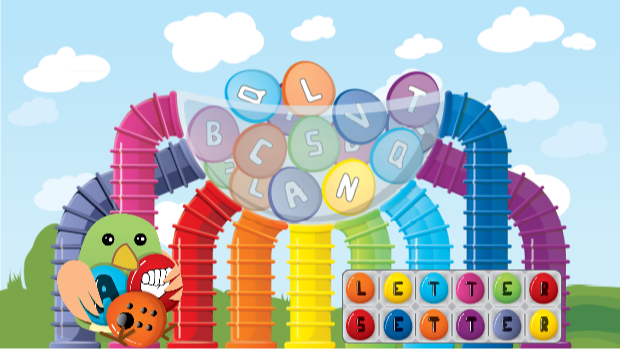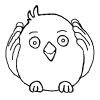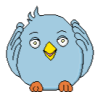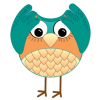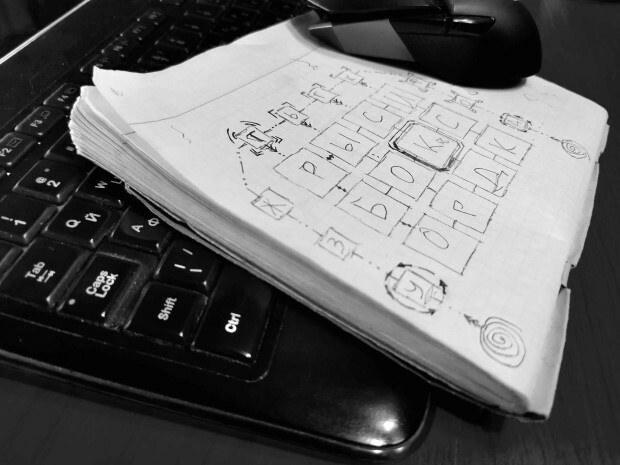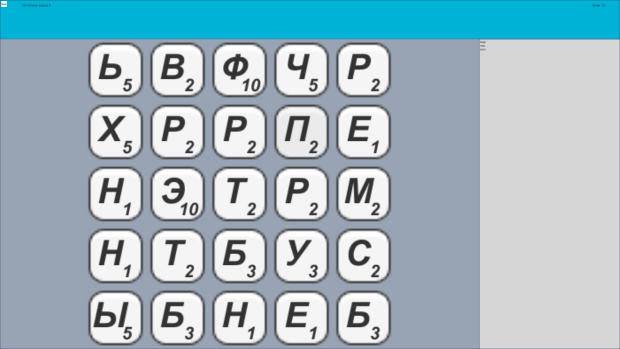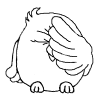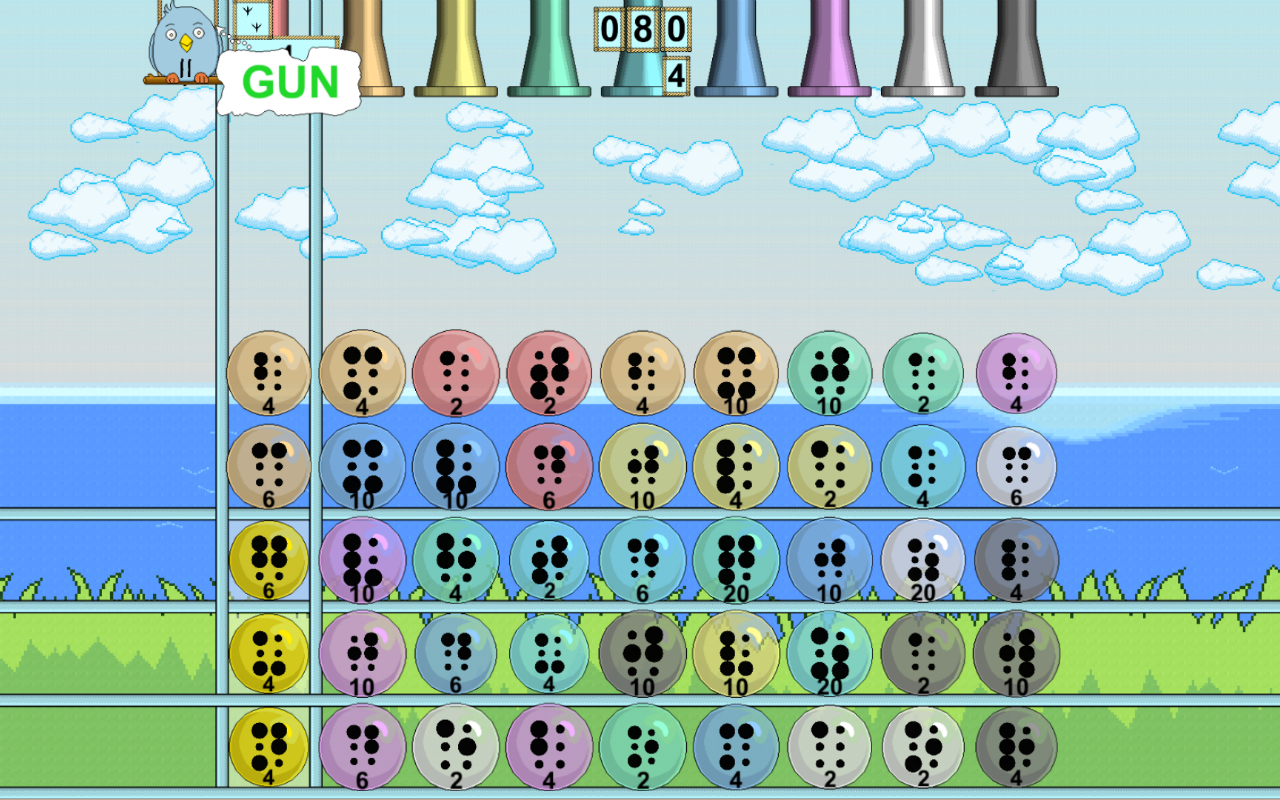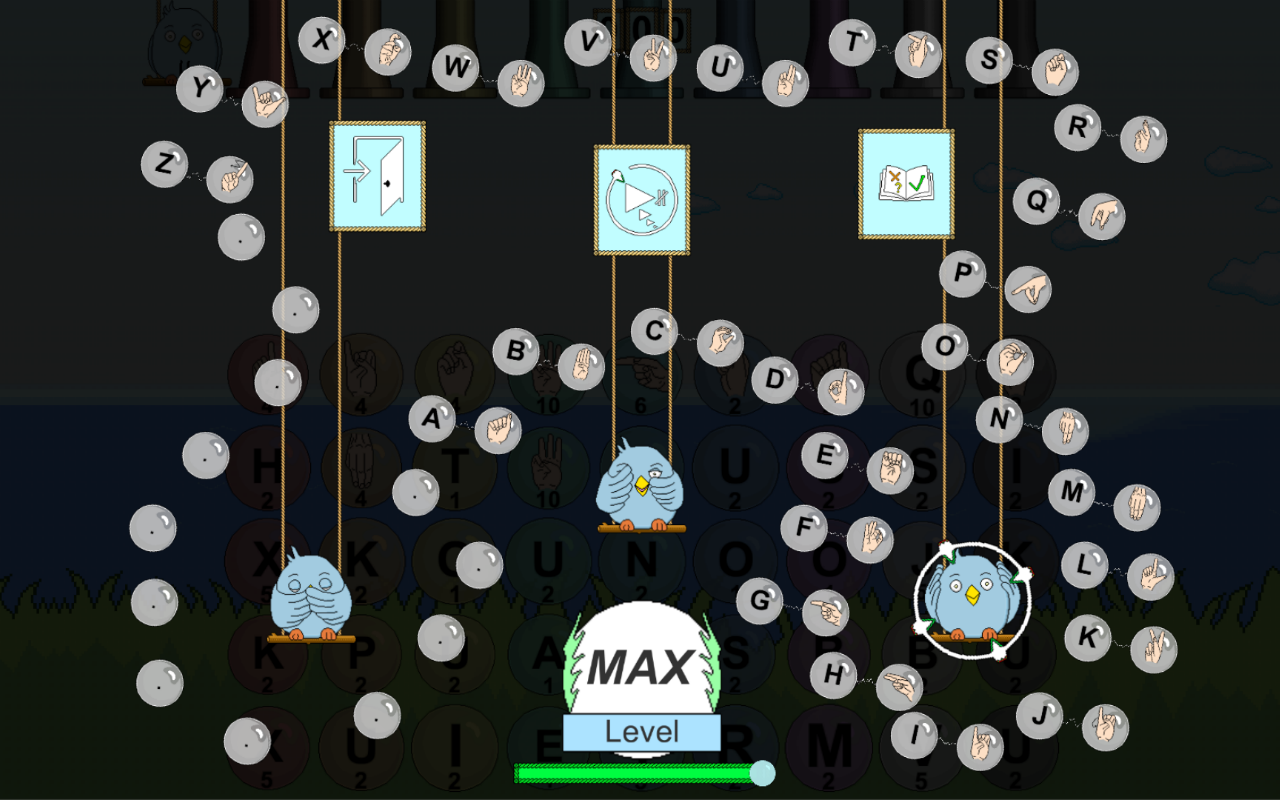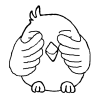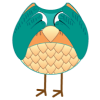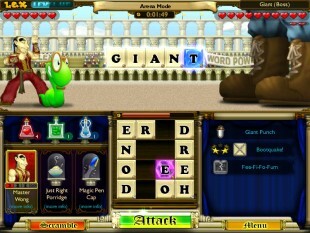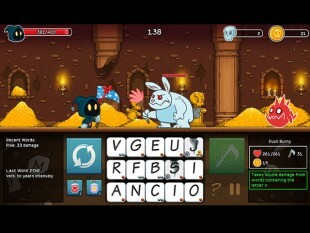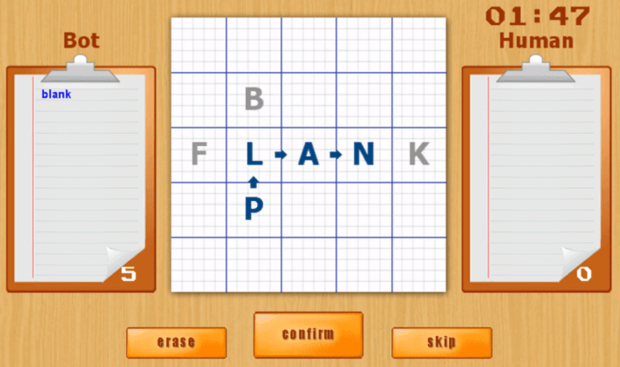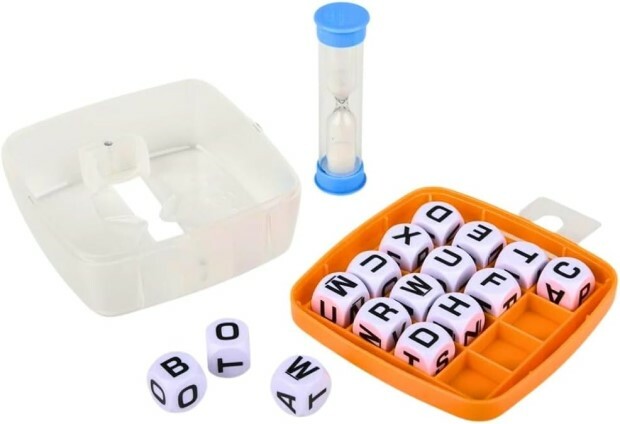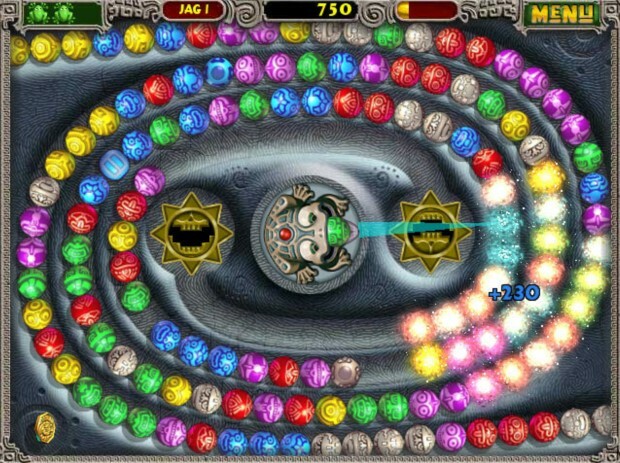Letter-Setter. Notes about one game development. P3
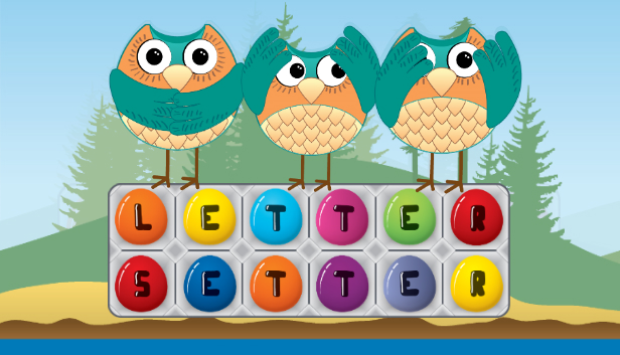
[hr][/hr]
…does not speak…



The first version of the game contained only movable tiles with letters. The letters were black, and the background was white - nothing could be simpler than that. It was very close to the prototypes drawn on paper, and, perhaps, I should have stick to that variant. Because simple games come hand by hand with simple art. But I wanted more…
I wish I had had a 2D artist at hand who would have been enthusiastic about the idea and would have agreed to work on the project on a voluntary basis. But I have found an artist with no previous experience in creating content for games who agreed to help me at the initial stage. So, the question was: what should we draw?
I imagined something meditative and calming: green grass, shining sun, some clouds and little birds...It were the birds that posed the biggest problem. I asked the artist to draw them, and then tried to digitize them manually. It all looked very strange, but I couldn't think of anything better - I meticulously drew every pixel of initial drawing scan. For want of any better word, we could call it some sort of pixel art. It took me some time, even more than I had spent on the first prototype, but much less than I had spent on compiling the dictionary (dictionaries were the real killers!). Anyway, those birds have determined the style of the game.
Backgrounds, pipes, bubbles, and clouds were drawn manually without any mock-ups, - having gained some practice when drawing the birds, I’ve got the hang of it, so new pictures came out easily. Of course, it was due to the simplicity of the style chosen, not the skill.
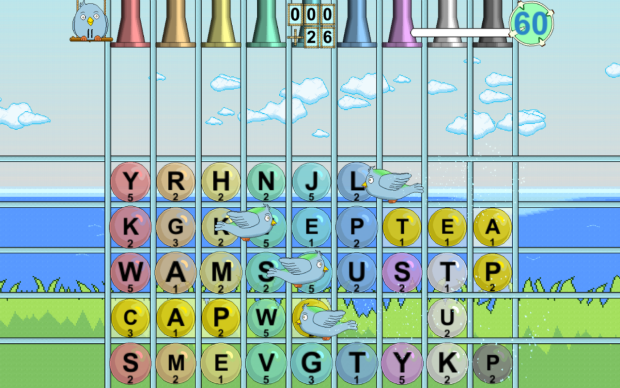
I wished I could say that the game was ready! But something was missing, and there was too much of something else:
- the picture turned out to be too cluttered: the letters were placed into colored bubbles (the color determined by the pipe color), marked with a point value, new words were highlighted, birds were here and there, and the scoring system was also present. It was hard to focus as attention was scattered.
- the playtests have shown that when trying to make up a long word, people move the letters sequentially (one tile at a time), and get very frustrated when unfinished words are destroyed within some other words. And nothing could be done with the desire to simply press on the letters to form new words, as it is done in most games (damn conservatives).
- at the beginning of the game, before all three-letter words are destroyed and crossed off the list of possible words, some letters were destroyed after each move, and the game was playing itself.
- progression introduced within Braille and Sign language learning modes was good to be seen in a standard mode as well.
And again, I faced numerous problems which had to be solved... When would I break this cycle and solve all of them?
I had to work it out!
The problem regarding the picture being overloaded could be solved by a real 2D artist with his artistic vision and sense of composition. But even without such we could do something on our own! The layout was cluttered, and there were some evident things to be withdrawn: the point values of the letters, as well as the bubbles coloring (it didn’t have much semantic load). Or should we combine these features instead of withdrawing them? Why haven’t I thought of it earlier? The colors will represent the point value of each letter, and its frequency as far as these attributes are related. Next came the field. Somehow, I have shrunk it significantly to make some room for displaying bonuses received. But in terms of time percentage, we actually spend most of our time looking at the board, not the bonuses! After all, that's where the game actually happens. Voila! Now we have a clearer emphasis, and the player's attention shouldn't be so scattered.
But still, something was missing, and I couldn't figure it out. So I gave in and started to look for a 2D artist. Since the game was almost ready, it was easy to make a detailed technical specification for outsourcing. All I need was to describe the game elements, break them down into assets, and make a list. However, it could have been even easier, if I had created the project documentation in advance. And so, in a couple of weeks new design was introduced, and the game was literally bursting with new colors.
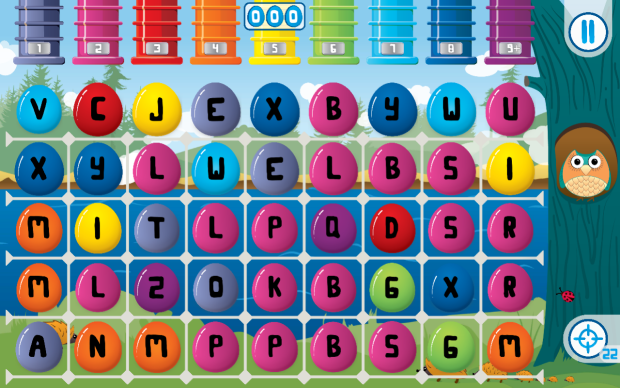
But let's get back to the flaws of the core game mechanics - letter movement... With all due respect, I was not going to change it! It’s true that it is much more complex than what the player expects, but it's more interesting! It really is... One should give this game a chance to reveal its beauty: in a couple of sessions you will love it as much as I do. Or, maybe, in a dozen of sessions - you just have to wait!
I have added tutorial for you to learn how to play this game. It explains the way the author sees this process. The only problem is that people don’t like tutorials, especially in word games, where the basic mechanics implies making up words out of letters, or, in other words, something they learned long-long ago, in childhood.
I did my best, but I failed. The problem didn't go away. Should I have changed something after all? But this was the game's gimmick. So, instead of removing some features, I’ve decided to add some more. Besides, there were no limited-use abilities! And that’s why I have turned players' whishes regarding letter movement into such abilities that would change the gameplay. But these abilities have to be earned.
“Sniper” is an ability, allowing you to pick up letters across the field to form the word you need. It is some kind of a curtsy to other word games. Plus, it allows to bypass the game restriction imposed by the field size.
“Artillery” is a modification of "Sniper" that allows you to clear the entire field if being experienced enough and possessing a bit of luck: one can score up to 5 words out of the letters without moving the latter across the field.
“Devastation” allows you to clear the field if you don’t like the current set of letters. Considering that the field size is 9 x 5 = 45 letters, you must really dislike the set, if you decide to use this limited-use ability. But randomness is such a thing - "crap happens".
“Crossworder” - is a curtsy to crosswords puzzles and those people who have taken part in playtests and complained that the letters they moved were destroyed within words they were not going to make. In general, this ability freezes the field and allows you to move the letters as you like, and non will be destroyed. Doing so, you can shuffle the entire field and try to make the words out of ALL the letters. So to speak, you can create your own crossword. If the entire field is cleaned, you will receive an achievement and a crazy score multiplier!
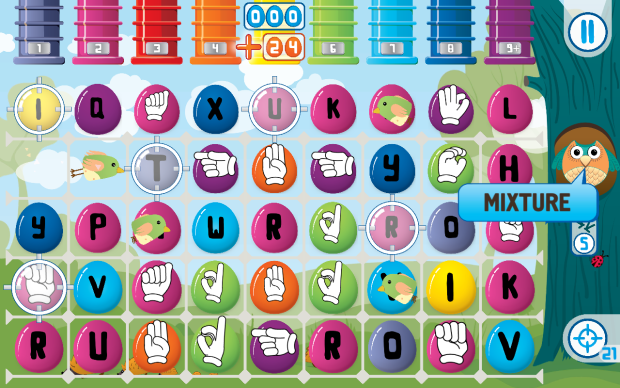
Finally, two remaining issues were left – the lack of additional challenge in the standard game mode (no progression), and the notorious random generation of short words at the beginning of the session.
The solution to the first problem was inspired by a verbal word game called "Contact". It’s always hard to explain the rules of oral word games. Since more often than not, one needs to play it at least once to get the gist. That’s why I’d better explain the way this game is used in Letter-Setter.
It is used in a form of mini word-guessing game (quest) that starts with the announcement of a letter of a target word. One can try to guess what the word is, but there will be quite a few options. But don't give up: as soon as any word containing the known letter is formed, the neighboring letter of the target word will be revealed. Then, to get another hint, you need to form a word containing both known letters. And so on, but the order of the letters must be the same as in the target word. So it goes until the "encrypted" word is guessed. To motivate the players to play this mini-game, we should reward them for completing it. So, our limited-use abilities were introduced just in time!
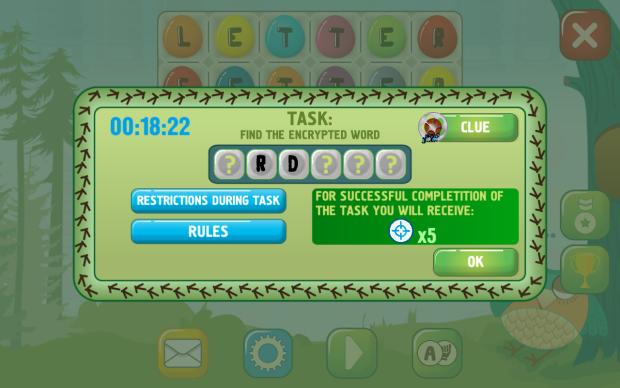
And for the final touch, I was to add some more confusing rules to our mini-game! Because the player must suffer! Muahaha! Just kidding... Or am I?... I don't know. But something had to be done with the game playing itself at the beginning of the session. I had to block this feature at least temporarily and for those who want it. So, I introduced the following: when our mini-game is on the go, there is a limit on the minimum length of words and a couple of other restrictions (just to make it more fun), including prohibiting the usage of specific letters or starting / ending the words with a certain letter!
Of course, all tasks and restrictions are randomly generated, providing an endless replay value with auto-balanced difficulty.
Well, it’s you who will estimate how far I have strayed from the initial idea when working on the project, I will not comment it. But as a result, the game turnes out to be a pretty hardcore word roguelike with the ability to improve real knowledge and expand one’s vocabulary. Who knows, maybe someday such a genre blend will suddenly become relevant.

[hr][/hr]
https://store.steampowered.com/app/676320/LetterSetter/
